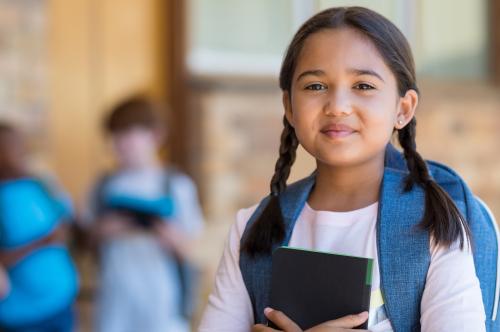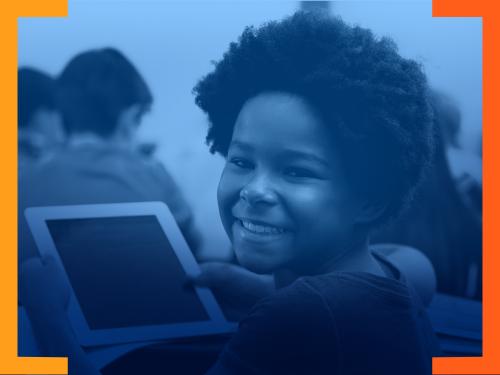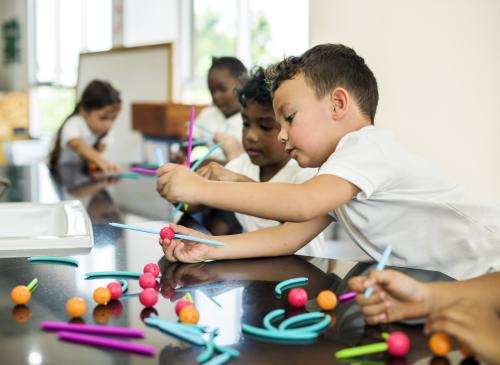2020 has been a year unlike any other: a global pandemic, the deepest global recession since World War II, rising inequality around the world, and a contentious presidential election and protests over racial injustice in the U.S. While virtually all sectors of the economy were affected, education systems around the world were severely hit, with more than 188 countries forced to close schools in March—and many remaining closed throughout the rest of the year.
While it’s been a year marred with tragedy and heartache, by necessity education innovations and new approaches have emerged out of the turmoil and are presenting real opportunities to transform education worldwide.
As the world contemplates a new year with the promise of a COVID-19 vaccine and a return to normalcy, we must ensure we don’t simply revert to pre-COVID-19 ways of operating. Below we review six trends and strategies that, if continued, should help us leapfrog toward a more equitable and relevant learning ecosystem for all young people in 2021 and beyond.
- Improved student agency. Prior to the pandemic, the ability to learn independently was not a skill many schools deliberately cultivated in children. But “learning how to learn” is an essential one—both now at a time when children aren’t learning under the constant supervision of an adult, as well as in the future when they will have to navigate multiple jobs over the course of a career. COVID-19 has underscored that the factory model of education is insufficient, and that schools must also intentionally develop 21st century skills like problem-solving to prepare children for lifelong learning. With some students already proficient in operating Zoom technology, the pandemic has unintentionally furthered children’s independence.
- The game changing role of parents in education. Before the global school closures in March, the education community spent relatively little time focused on the role of parent engagement, but we are increasingly seeing that this was an oversight. When parents are involved and supportive of their children’s learning at home, all children—but especially children from low-income communities—benefit. From Cajon Valley School District in California using community liaisons to meet with parents to the state of Himachal Pradesh in India pivoting to an electronic parent teacher meeting strategy, educators are developing creative ways to engage parents.
- New education allies. The pandemic has impacted not only children’s ability to learn but also their physical and socio-emotional needs. Fortunately, a wide range of actors outside the school walls—from families to food banks to employers—are stepping up to support children’s holistic development and enable a learning experience in and outside of school.
- The potential of education technology. While in the past the prophesized potential of education technology has not always lived up to expectations, we are now seeing the heroic efforts of educators, many in poor communities with limited ed-tech resources, innovate to continue student learning. While some of these resources rely on good internet connectivity, there are many inspiring examples of educators and nonprofits developing creative, context-driven distance learning solutions using offline technology, such as basic cell phones or radio, in locations ranging from East Africa to India.
- School emergency preparedness. The COVID-19-induced school closures in mid-March caught school districts by surprise, leaving many scrambling to provide remote learning activities. Given that COVID-19 is unlikely to be the last large-scale school disruption, it’s imperative to build a more resilient education ecosystem. Short-term stopgap measures have proven insufficient, and awareness of the need to develop education emergency preparedness plans that take into account long-term learning goals are gaining traction.
- Public support for schools and teachers. As students struggle to learn from home, gratitude for teachers, their skills, and their caretaking role in society has skyrocketed. Schools are at the heart of the social and economic recovery, and teachers around the world are developing creative solutions to continue learning—empowered to unleash their ingenuity and take risks. It’s hard to imagine there will be another moment in time when the central role of education is so well understood, which presents a tremendous opportunity for the education community to capitalize on this support and transform key elements of education systems.
As we look to 2021, our wish is that as schools reopen their doors, we build on these trends and strategies to ensure that all children can thrive. We hope that a decade from now, we look back at 2020 not as a moment when the global education community reverted to old strategies of access first, learning second. Instead, hopefully this will be a moment that propels education systems into new, more effective ways of providing quality, relevant teaching and learning experiences to students in and out of school—experiences that support their ability to apply what they learn to their lives and prepare them for the world that is to come.







Commentary
2020: A year of turmoil but also hope in education
December 22, 2020